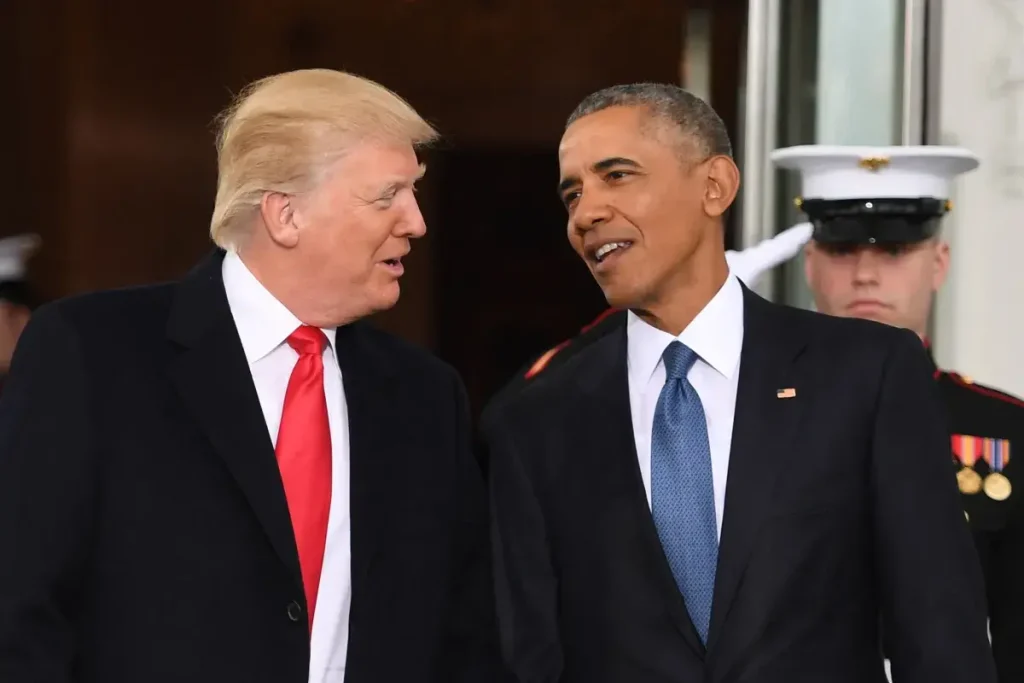Obama Outshines Trump in Latest Popularity Poll, Reflecting Enduring Public Perceptions
A recent nationwide poll conducted by Marquette University has revealed that former President Barack Obama continues to enjoy significantly higher favorability ratings among Americans than current President Donald Trump. The survey, which measured public perceptions of presidents dating back to Ronald Reagan, paints a telling picture of how Americans view their recent leaders. With critical gubernatorial races approaching in New Jersey and Virginia next month, followed by the 2026 midterm elections, these popularity metrics could have substantial implications for both political parties’ strategies and candidates.
The poll’s findings demonstrate a stark contrast between the two most recent Democratic and Republican presidents. Obama secured a positive net favorability rating of +17 points, with 57% of Americans viewing him favorably compared to 40% unfavorably. By comparison, Trump received a negative net rating of -15 points, with only 42% of respondents expressing favorable opinions versus 57% unfavorable. This 32-point gap in net favorability highlights the dramatically different ways Americans perceive these two transformative political figures. According to Meena Bose, executive dean of Hofstra University’s School of Government, Public Policy and International Affairs, Obama’s enduring popularity stems from his “personal appeal, inspirational rhetoric, and unanticipated success in the 2008 presidential race,” with the themes of “hope and change” continuing to resonate in public consciousness years after his presidency concluded.
Interestingly, the survey also revealed that former President Ronald Reagan enjoys the highest net favorability among all presidents included in the poll, with a remarkable +28 rating (58% favorable, 30% unfavorable). This suggests that historical perspective and the passage of time can significantly impact how presidents are remembered and regarded. Other former presidents received mixed but generally positive ratings: George H.W. Bush matched Obama with a +17 net favorability, while both Bill Clinton and George W. Bush secured modest +8 ratings. The data indicates that Americans tend to view past presidents more favorably once they’ve left office and the immediate political tensions surrounding their administrations have faded – with one notable exception.
Former President Joe Biden, who left office earlier this year, currently holds the lowest favorability rating of any president included in the survey. With only 37% viewing him favorably compared to 61% unfavorably, Biden’s net rating of -24 points places him below even Trump in public estimation. Bose suggests this may be largely attributable to the circumstances of his departure, noting that his withdrawal from the presidential campaign “may overshadow current assessments of his presidency.” She also suggests that, like other former presidents, public perception of Biden may improve over time as the immediate political context recedes. The poll, which surveyed 1,005 adults nationwide between September 5-24, 2023, carries a margin of error of plus or minus 3.4 percentage points.
These favorability ratings carry significant political implications as both parties prepare for upcoming elections. Democrats hope to capitalize on Trump’s relatively low popularity by linking Republican candidates to him, a strategy they believe could lead to electoral victories. The polling memo specifically notes that the earliest presidents in the survey – Reagan and George H.W. Bush – had relatively high percentages of respondents indicating they “haven’t heard enough about them” to form an opinion, highlighting how public memory and awareness of past presidents naturally diminishes over time. This generational shift in awareness presents both challenges and opportunities for politicians seeking to invoke presidential legacies in their campaigns.
Obama himself has remained politically active, though typically avoiding direct confrontations with Trump. In a recent post on social media platform X, he criticized Republican redistricting efforts without naming Trump specifically, writing: “Republicans can’t win on their policies, so they are trying to dodge accountability by rewriting the rules. These lawmakers are going out of their way to silence the will of the people and deliberately undermine our democracy.” This measured approach to political commentary appears to align with his continued popularity. Meanwhile, a critical demographic that both parties are closely watching consists of voters in battleground states who supported Obama in 2008 and 2012 but later backed Trump – a swing bloc that Democrats hope to recapture in future elections.
As the political landscape continues to evolve, these presidential popularity ratings will remain an important barometer of public sentiment. Trump’s current favorability metrics present both challenges for Republicans hoping to distance themselves from potential negative associations and opportunities for Democrats seeking to frame the electoral choice in terms of presidential legacies. Meanwhile, Obama’s enduring popularity, now seven years after leaving office, demonstrates how some presidential figures can transcend immediate political divisions to maintain broadly positive public perceptions. With several crucial elections on the horizon, both parties will be closely monitoring these trends and adjusting their strategies accordingly to appeal to an American electorate that continues to view its recent presidents in markedly different lights.


